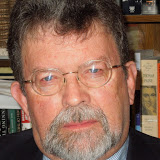Fieldwork on the west side of Lake Turkana (Kenya) in 1984 turned up a skeleton of a Homo egraster -- "Turkana Boy" -- who appears to have lived some 1.6 million years ago. "The Boy was tall, with long legs that contributed importantly to basic body proportions that are close to our own." [p. 93]
But it was brain size, according to Tattersall, that distinguished the evolution of the genus Homo. "Among the australopiths, we're in the fairly tight range of about 450 cc to 550 cc. Among the earliest species of Homo, in the period following about two million years ago we're looking at a range of some 600 cc to 850 cc; and by around half a million years, give or take, the range has broadened to around 725 cc to 1,200 cc." [p. 130]
According to Tattersall, "the initial dispersal [of hominids] out of Africa appears to have occurred as early as 1.8 million years ago." [p. 119] The change in body form (witnessed in Turkana Boy) and environmental change appear to have enabled and prompted the move.
Beginning approximately 600 thousand years ago Homo heidelbergensis emerged from Africa to roam the old world for the next 400 thousand years, as evidenced by fossils found in Ethiopia, Zambia, Greece and China. "They were adroit hunters who pursued large game using sophisticated techniques, built shelters, controlled fire, understood the environment they inhabited with unprecedented subtlety, and produced admirable stone tools that at least occasionally they mounted into composite implements." [p. 142] But their intelligence was probably intuitive and non-declarative. [p. 143]
Homo heidelbergensis appears to have lost out to Homo neanderthalensis approximately 200 thousand years ago, but Neanderthal man appears to have been eradicated by Homo sapiens approximately 30 thousand years ago.
Although both Tattersall and Edward O. Wilson (whose book is also under review) agree that Homo sapiens finally emerged out of Africa some 60 thousand years ago, they differ as to what is was that allowed our species to dominate (and despoil?) the earth.
Tattersall credits our ability to manipulate symbols. He believes "the invention of language is the obvious candidate for the stimulus that tipped our ancestors over the symbolic edge." [p. 216] Thus, given the evidence of symbolic activity dating back 100 thousand years ago, language must be at least that old. Tattersall wouldn't be surprised if origin of our symbolic capacity emerged from some children at play.
But, the eminent biologist Edward O. Wilson disagrees. He credits the extremely rare phenomenon of eusociality: "group members containing multiple generations and prone to perform altruistic acts as part of their division of labor."
In his enormously influential book, Sociobiology (1975), Wilson asserted that social behavior has a biological foundation. In his latest book Wilson again asserts that behavioral traits are hereditary, but also that "hereditary altruists form groups so cooperative and well-organized as to outcompete nonaltruistic groups-- [p. 166] He calls it "group selection."
As Charles Darwin wrote in The Origin of Species, "The most skillful breeder, Sir John Selbright, used to say with respect to pigeons that "he could produce any given feather in three years, but that it would take him six years to obtain head and beak." [Christian, p. 87] Darwin simply demonstrated that nature, operating over immense periods of time, performed the same function as breeders like Selbright who engage in artificial selection. Darwin called it "natural selection." Wilson's controversial theory of eusociality claims that natural selection also operates at the group level. In fact, he argues for an "iron rule" in genetic social evolution: "Selfish individuals beat altruistic individuals" but "groups of altruists beat groups of selfish individuals." [Wilson, p. 243]
Thus, contrary to Tattersall's claim, Wilson asserts, "language did not create the [symbolic] mind, but the opposite. The sequence in cognitive evaluation was from intense social interaction in early settlements to a synergism with increasing ability to read and act upon intention, to a capacity to create abstraction in dealing with others and the outside world and, finally, language." [Ibid, p. 228]
Central to Wilson's theory of eusociality is his rebuttal -- both mathematically and biologically -- of the generally held theory of inclusive fitness. But, his rebuttal has been contested by some 150 biologists. (For a critique of Wilson's theory, see "How Fit is E. Wilson's Evolution?" by Steven Mithen, New York Review of Books, June 21, 2012, pp. 26-28).
Nevertheless, Wilson scarcely differs from Tattersall in believing that language developed at least 60 thousand years ago. Thus, if language developed some 100 thousand years ago (Tattersall) to some 60 thousand years ago (Wilson), then it is safe to conclude that the first religions developed during that time period.
Why? Because, as Robert N. Bellah has observed, in Religion in Human Evolution, "religion becomes possible only with the emergence of language." [p. xiv]
Tattersall not only doubts that the Neanderthals had language, he also doubts that their invention of burial constitutes proof of symbolic thought and belief in an afterlife. Thus, although he has little to say about religion in his book, the reader can infer that Tattersall credits Homo sapiens with the invention of religion.
Although Wilson believes that Neanderthal man "may well have had a language," like Tattersall he sees little to suggest that the species had "costumed shamans" of the sort that Homo sapiens had 30 thousand years ago. [pp. 220-223]
(Note: You can view every article as one long page if you sign up as an Advocate Member, or higher).





